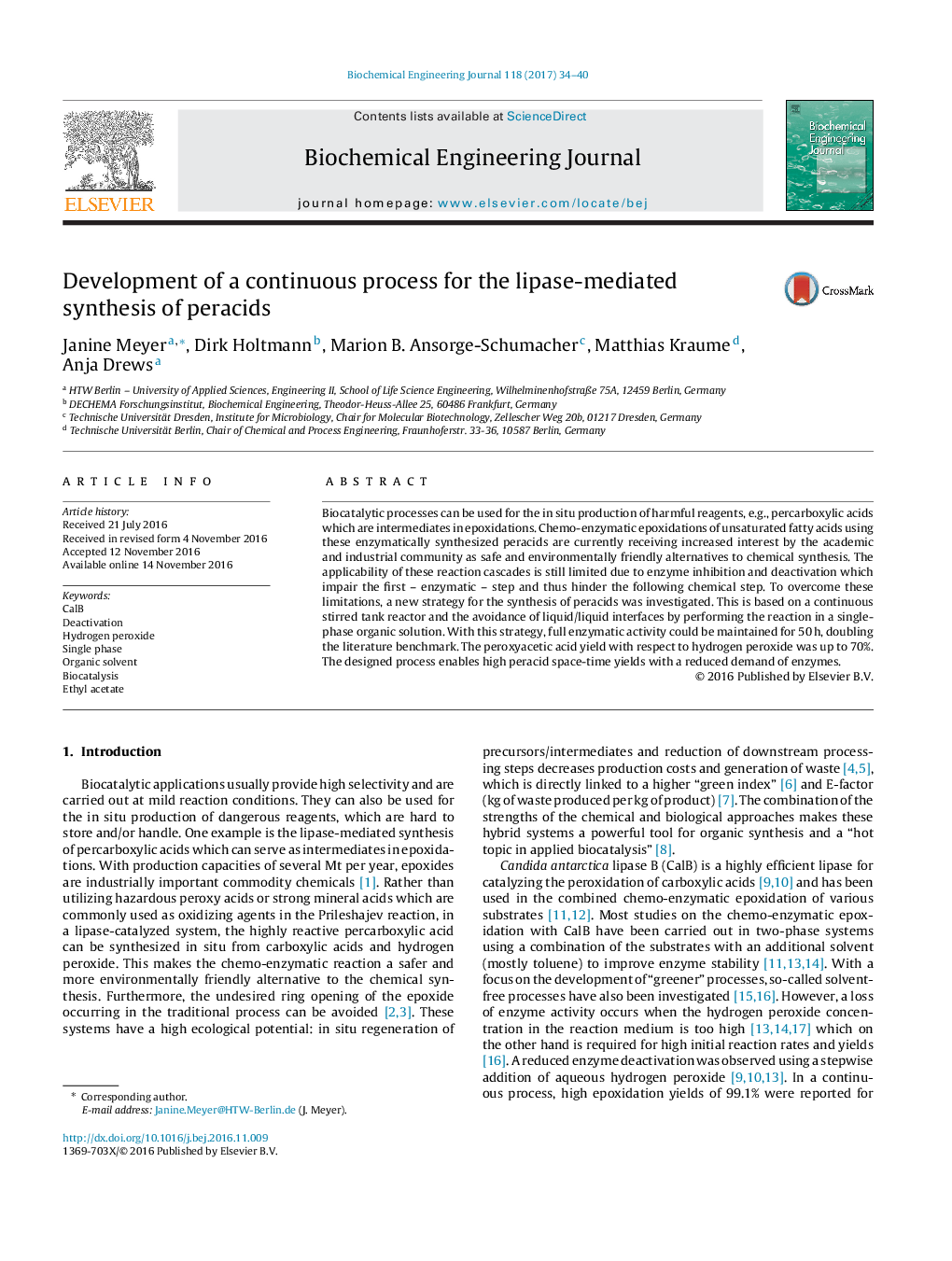| Article ID | Journal | Published Year | Pages | File Type |
|---|---|---|---|---|
| 4752171 | Biochemical Engineering Journal | 2017 | 7 Pages |
â¢Enzymatic peroxidation was carried out in a single phase of ethyl acetate saturated with H2O2.â¢A compromise was found between high reaction rate and enzyme deactivation by adjusting temperature and residence time.â¢Impoved process conditions lead to two-fold increase in enzyme and process stability (50 h).â¢The designed continuous process enables high space-time yield.
Biocatalytic processes can be used for the in situ production of harmful reagents, e.g., percarboxylic acids which are intermediates in epoxidations. Chemo-enzymatic epoxidations of unsaturated fatty acids using these enzymatically synthesized peracids are currently receiving increased interest by the academic and industrial community as safe and environmentally friendly alternatives to chemical synthesis. The applicability of these reaction cascades is still limited due to enzyme inhibition and deactivation which impair the first - enzymatic - step and thus hinder the following chemical step. To overcome these limitations, a new strategy for the synthesis of peracids was investigated. This is based on a continuous stirred tank reactor and the avoidance of liquid/liquid interfaces by performing the reaction in a single-phase organic solution. With this strategy, full enzymatic activity could be maintained for 50Â h, doubling the literature benchmark. The peroxyacetic acid yield with respect to hydrogen peroxide was up to 70%. The designed process enables high peracid space-time yields with a reduced demand of enzymes.
Graphical abstractDownload high-res image (92KB)Download full-size image
